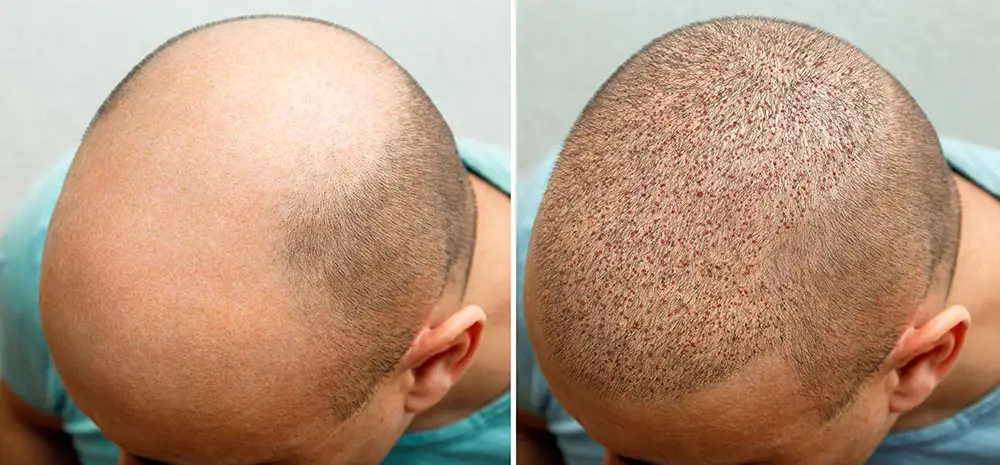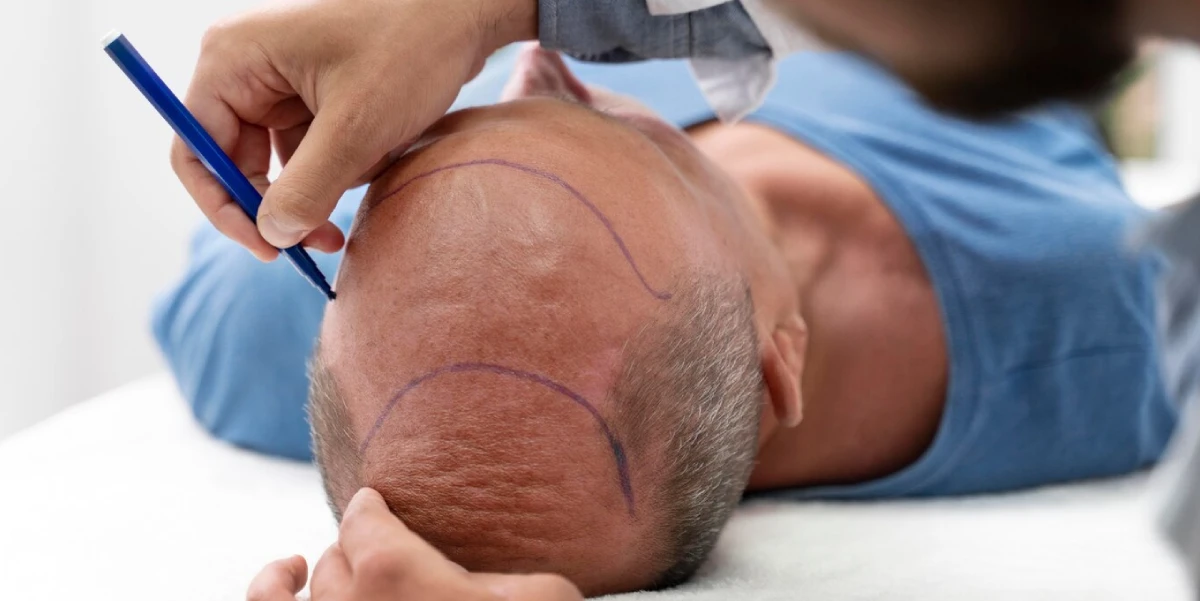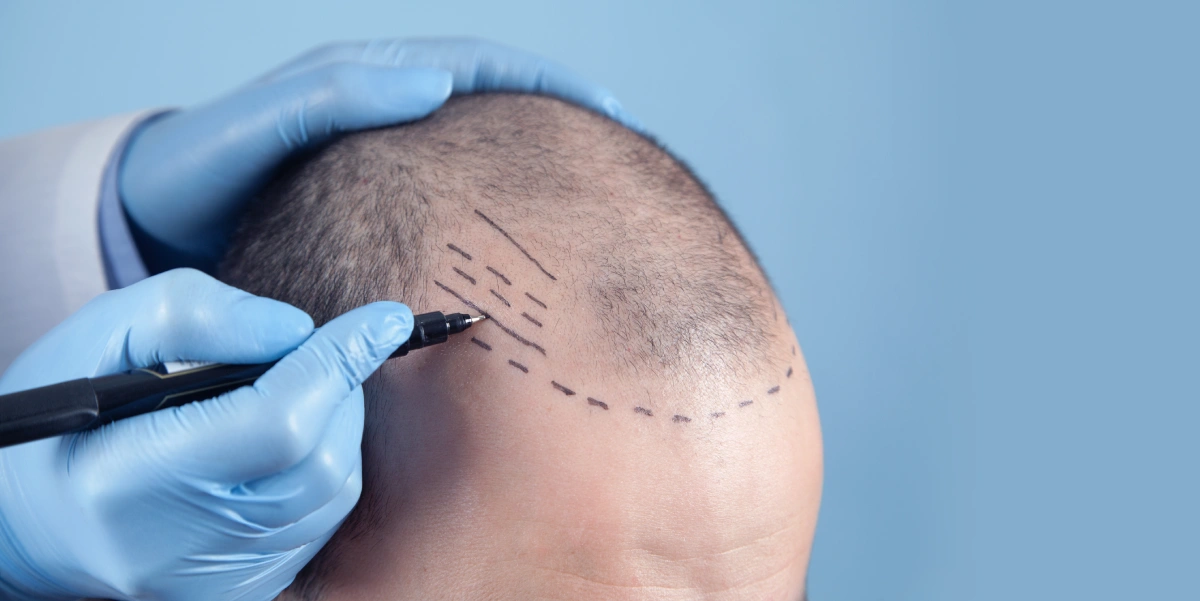Pros and Cons of a Surgical Hair Transplant
- By Harleys Clinic
- Jan, 04 2023
Seeking for the best and permanent remedy to thinning hair or balding areas of the scalp? If so, a surgical hair transplant in Mumbai performed by Dr. Sumit Agrawal, Harleys Hair Transplant Clinic may be an apt option.
The experience of thinning or balding of the scalp is a very heartbroken feeling that can lower one’s self- esteem and confidence. Partial or complete loss of hair on the scalp can be caused due to a variety of factors including genetics, aging, or environmental issues. For some people, hair loss may be temporary while for others it may be permanent. Luckily, there are many hair restoration treatments available, the most sought-after being the surgical hair transplant.
If one is considering hair transplant surgery, one might not be able to go ahead with it because of many myths. Read on to know about hair transplant surgery, read through the advantages and disadvantages of the procedure, and finally discover the candidacy for hair transplant with the valuable insights shared by the best hair transplant doctor in Mumbai at Harleys Hair Transplant Clinic.
What is a surgical hair transplant?
Surgical hair transplant or hair transplantation is a minimally- invasive surgical procedure wherein healthy hair follicles are taken from the hairy body part (the back or side of the head) called the donor sites and implanted in frontal thinning or balding sections of the scalp called the recipient sites. Grafting is the most successful way of transplanting healthy, thick hair. It is performed only by an expert hair transplant surgeon in Mumbai at Harleys Hair Transplant Clinic.
How is it done?
There are two very common approaches or techniques to performing hair transplant surgery.
Follicular Unit Strip Surgery or Follicular Unit Transplant (FUSS/FUT): It is a traditional method wherein a strip of hairy skin is excised out of the donor site and the incision is sutured. This skin strip is then dissected into tiny follicular units with the help of a microscope. One follicular unit contains one or more hair follicles. Next, the recipient sites are micro-punctured to create tiny slits to receive the hair follicles. The donor follicular units are inserted one by one into these holes.
Follicular Unit Excision (FUE): It is an advanced method wherein a micro-punching tool or a motorized extractor is used to remove the healthy hair follicles from the donor site. These harvested hair follicles are then inserted into the slits created at the recipient site.
Pros of Hair Transplant Surgery
Highly Successful results: Hair transplantation is the only hair restoration solution, a scientifically advance procedure, that guarantees healthy growth of hair in thinning or bald areas of the scalp. With the help of the FUSS or FUE method of hair transplantation, a large number of hair follicles can be easily grafted as this technique harvests hair follicles in follicular units. These techniques can be combined together to provide maximum yield of grafts in advance grade of hair loss. Using advanced technologies, now hair transplants can last for a lifetime. After completion of the sessions, the transplanted hair won’t lose again and grow uniformly. The existing hair need to be maintained with medicines.
Natural and subtle results: Through the use of cutting-edge technologies by highly experienced surgeons, natural and subtle results can be obtained after hair transplantation. The surgeons determine the most effective angle, location, and distribution of the transplanted hair and accordingly execute it during the operation. The patient’s own hair follicles are used in the procedure. A completely natural look is formed as the transplanted hair seamlessly blends with the existing healthy hair because both have the same color, texture, and density. Therefore, no one other than the surgeon and the patient would be able to tell that the patient has undergone a surgical hair transplant.
Straightforward procedure: Hair transplantation does not involve any complex before and after procedure workups. The surgical hair transplant is usually done in a single session that lasts for 6- hours, depending upon size of area to be grafted. Local anesthesia is provided to ensure comfort during the surgery.
No need for specialized treatments: Unlike other cosmetic-based hair treatments, newly transplanted hair does not require any special care. As the surgery is done using the patient’s own hair follicles, hair washing, styling, coloring, and maintenance can all be done as usual. Thus, the patient can treat their transplanted hair just like any other healthy hair on the scalp for a lifetime.
Completely safe and effective: Blood tests and allergy test are done before the procedure to check your fitness for the surgery. The hair transplant surgery neither involves the use of any chemicals or medications that could damage the existing hair. Its done under local anesthesia so you are conscious throughout the procedure.
Improves aesthetics and boosts self-esteem: Once the surgery is over and the newly transplanted hair grows naturally, the patient achieves an aesthetic appearance and regains more youthfulness. This help patient build his/her lost trust or confidence in personal, social, and professional relationships. There is a significant improvement in the patient’s personality.
Cons of Hair Transplant Surgery
A surgical procedure: The thought of undergoing a lengthy surgery, tends to frighten many patients seeking hair transplants and make them confused about going ahead with the surgery. However, most clinics allow patients to listen music or watch videos during surgery to keep them relaxed, and comfortable, and provide the best care throughout their treatment course.
Longer recovery: Early healing and recovery takes a week time. During the recovery, it is important to follow post-operative instructions provided by the hair transplant clinic to avoid any potential complications or risks. These include:
-
Avoid scratching, rubbing, banging head or any such actions that could damage the donor or transplanted hair.
-
Sun-cover the head for atleast 10days.
-
Sleep with the head and neck raised using pillow, to help in reducing swelling and heal faster.
Results vary from patient to patient: Results or success rate nay vary from person to person. It depends on may variables like genetics, age of hair fall onset, pattern of hair loss, progress of hair loss, quality of donor hair. Therefore, it is important to check on the quality of existing hair before a hair transplant.
Some side effects: After the surgery, there are chances of the transplant area graft being dislodge. Therefore, the operated area must be taken care of and kept covered. It is important to complete taking the prescribed course of antibiotics. Post-surgery, the scalp remains swollen for a 3-5days & can have boils before the newly transplanted hair starts to grow normally. Thus, it is important to take proper care till the scalp heals.
New hairline: The new hairline will not be exactly the same as it used to be earlier In transplant the surgeon makes a mature hair line, which matches the current facial features and looks natural.
Some scarring on the head: The surgery may leave minor marks or less noticeable scars on both donor and recipient sites. these marks are not seen even if the hair are trimmed short or shaved. but may be seen if scalp is shaved. In the case of the FUT method, the donor site will need sutures and visible scarring.
Am I a suitable candidate for a surgical hair transplant?
After getting aware of the possible advantages and disadvantages of getting hair transplants, one can determine whether one is the best candidate for this procedure or not. Typically, good candidates for hair transplant surgery hold the following characteristics:
Any gender: Both men and women can reap successful results from hair transplant surgery.
A healthy adult: People who are aged above 25 years have more chances of getting successful hair transplants as all of their hair loss has already occurred.
Suffer from pattern baldness: Males who suffer from pattern hair loss at the front and top of the head and females who experience hair thinning at the crown and top of the head.
Holds reasonable expectations and a positive outlook: It is important to have realistic expectations. For instance, one must expect to get moderate density transplanted hair similar in shape and texture as the existing, unaffected hair.
Interested in undergoing hair transplant surgery in Mumbai? Consult now the expert Dr. Sumit Agrawal. He helps his patients with complex and long-term hair treatment processes by simplifying hair transplant procedures. He understands every patient's hair loss case, studies the patient's medical history, and then provides them with a solution for their hair loss problem. Book a consultation today to know more!






